5 RARE ANIMALS TO LOOK FOR IN BANGLADESH
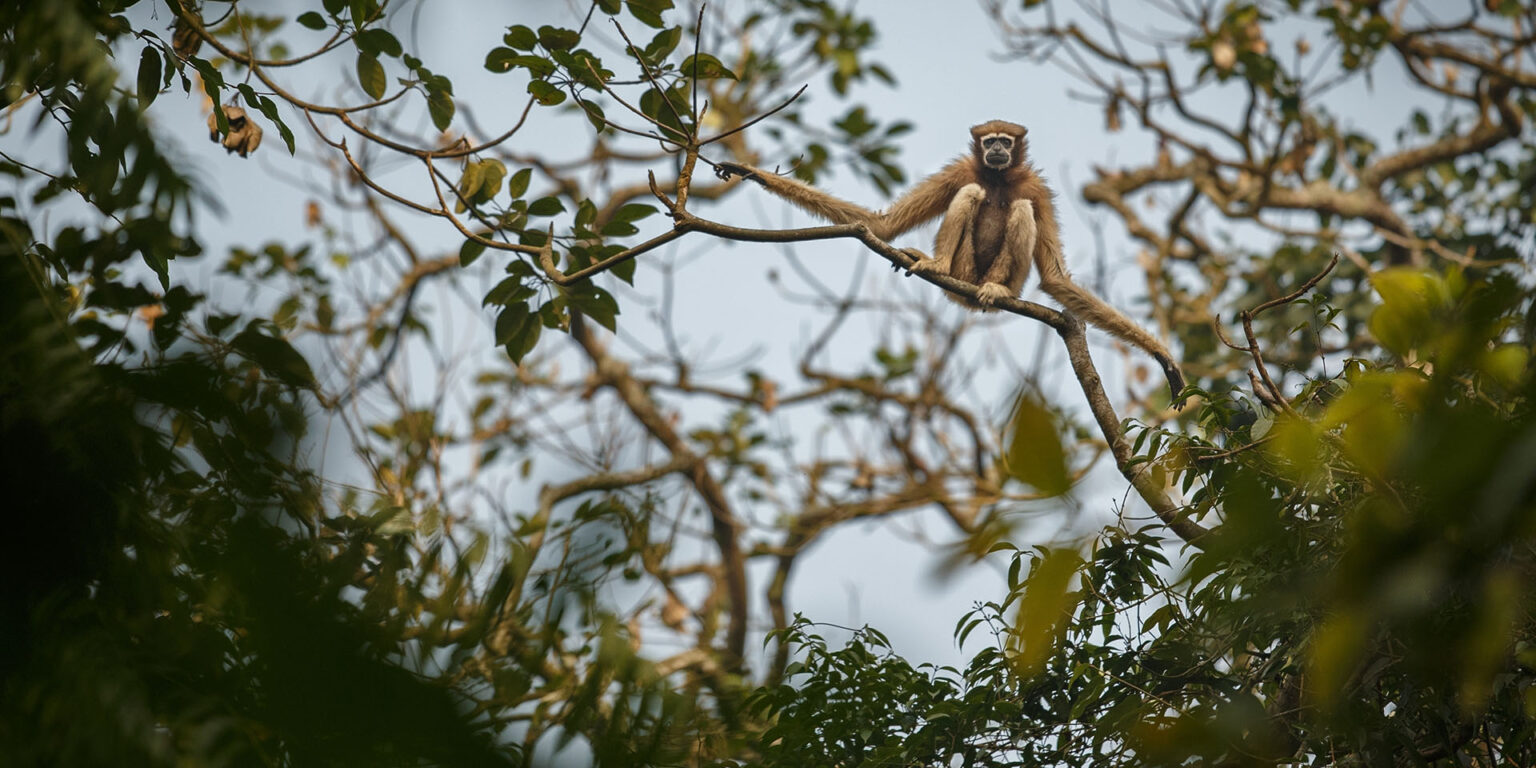
Dhaka, March 1, 2021: It’s not easy to get out of the traffic of Dhaka, but once you do, the marshy, forested wilderness of Bangladesh is thick. Now, travelers today are unlikely to run across Bangladesh’s most famous animal, the mighty Bengal tiger, but hidden in the swamps and jungles, some very special animals are lurking.
Despite being home to tigers, elephants, and other large fauna, Bangladesh is not normally known for its wildlife – a reflection both of the nation’s biological diversity and humankind’s modern impact on it.
WESTERN HOOLOCK GIBBON
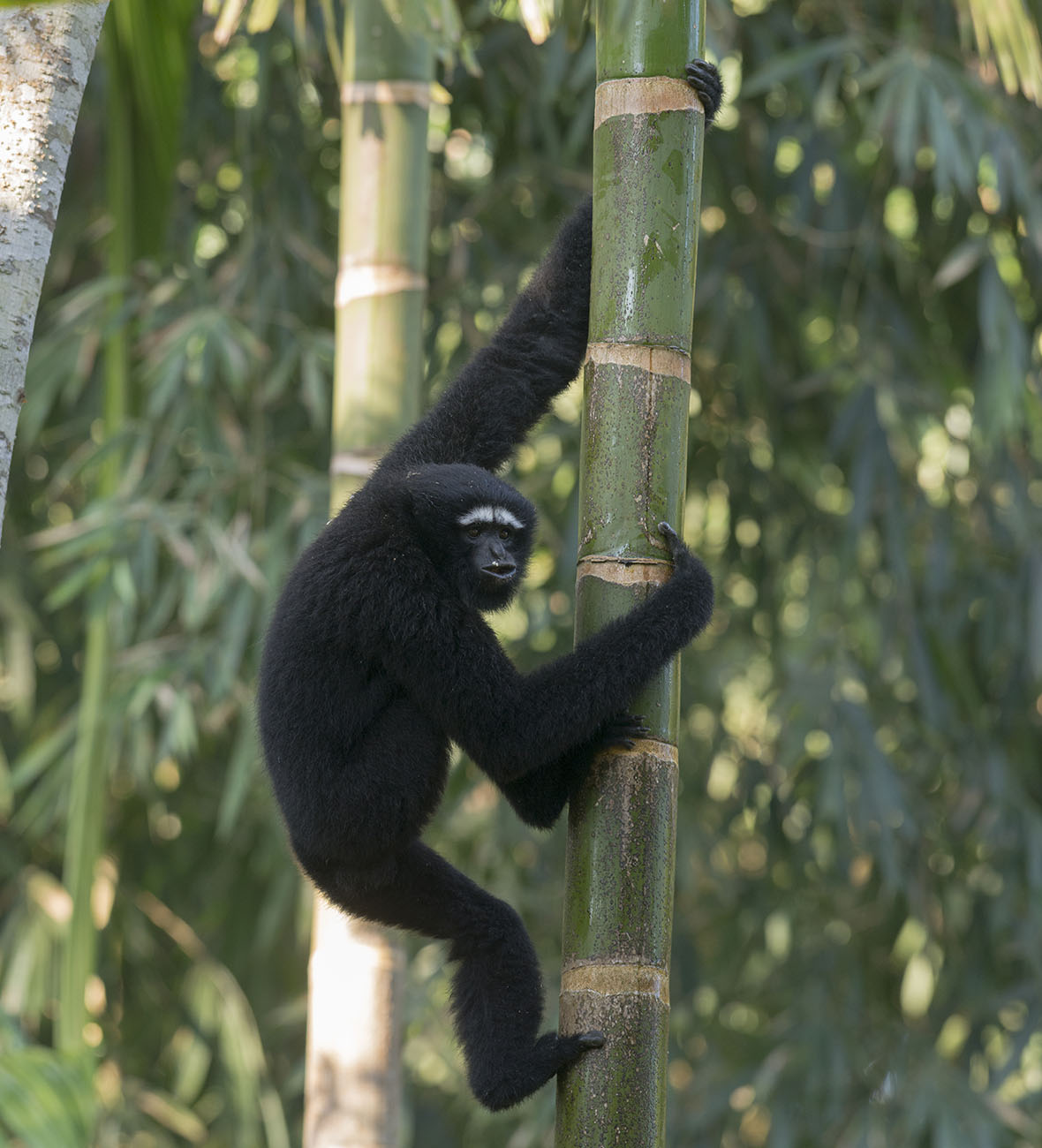
ABOVE: A male western hoolock gibbon.
Their shrill whooping call and swift movement among the treetops confirms the rare arrival of the western hoolock gibbon. Arms more than double the length of their legs, the population of these tailless primates has declined by almost 90 percent over the past 30 years as a result of deforestation and human interference.
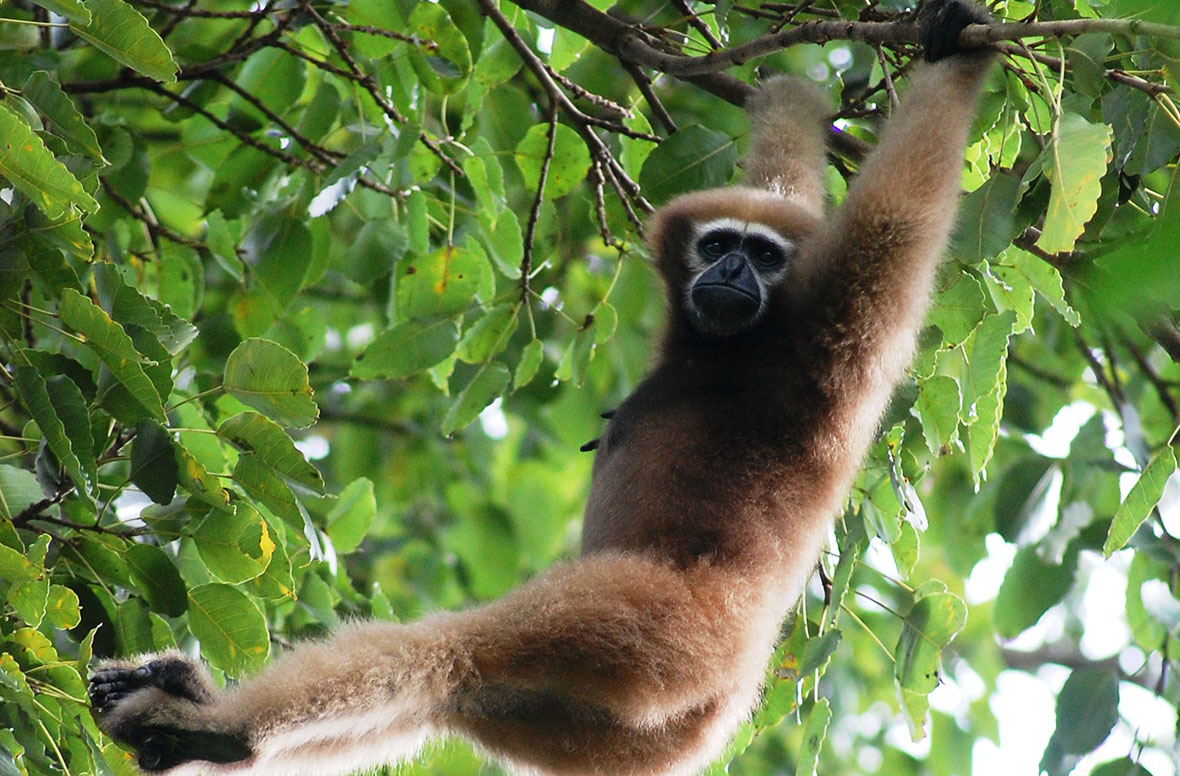
ABOVE: Very few western hoolock gibbons remain, but there is a chance of catching a glimpse of them in Lawachara National Park.
A recent addition to the Species Survival Commission (IUCN/SSC) list of the world’s 25 most endangered primates, these gibbons can be found in numbers between 200 and 300 hanging around the Lawachara National Park in eastern Bangladesh. A mixture of natural vegetation and planted tree species, the protected area is part of an ongoing conservation project replanting food trees for the western hoolock gibbon. Travelers can walk around the area on their own or with a local tour guide, but to avoid disappointment, early morning is the best time to spot (and hear) gibbons because that’s when they leave their nests to hunt for food. They rarely touch the ground, so eyes and ears should be angled toward the trees.
MUGGER CROCODILES
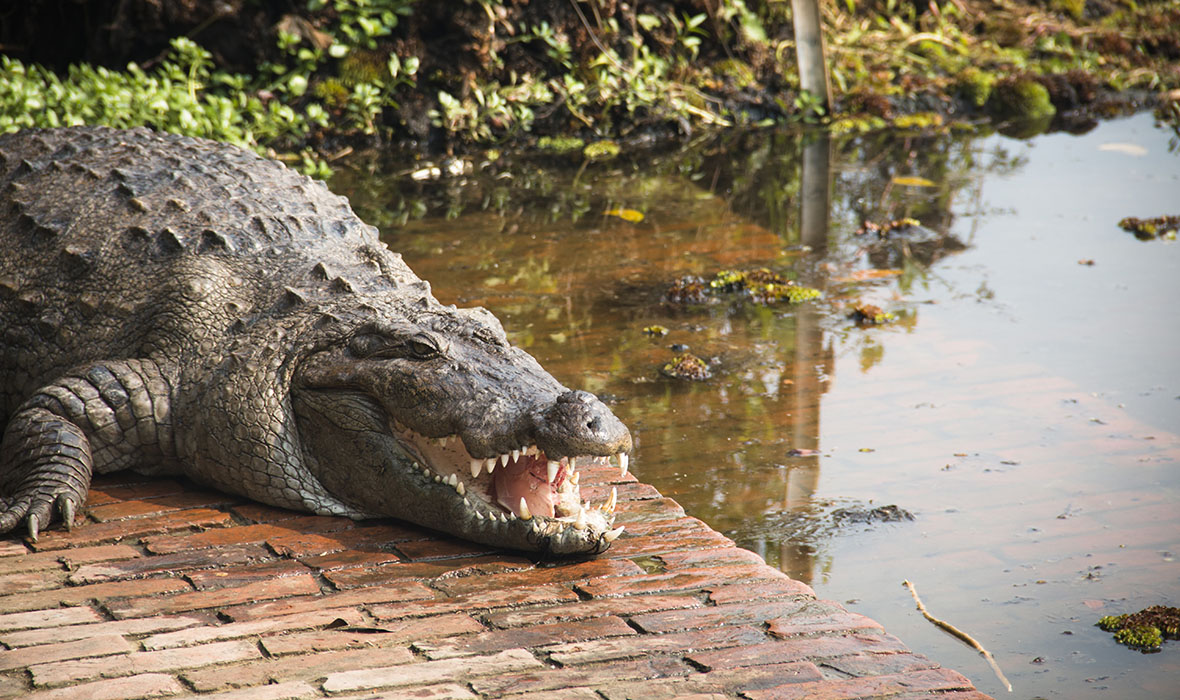
ABOVE: Besides their famous tigers, mugger crocodiles walk the muddy marshlands of the Sundarbans.
The sizeable mugger crocodile is heavily armored with fearsome grey-brown scales and has the longest snout of any crocodile in the world. The still, marshy shores of the Sundarbans – a certified UNESCO world heritage site which covers nearly 350,000 acres of mangrove forest – are an excellent environment for this terrifying reptile. Forest officials claim there are around 100 mugger crocodiles in the protected area, but in the labyrinth of canals and rivers inside the forest, sightings are a challenge.
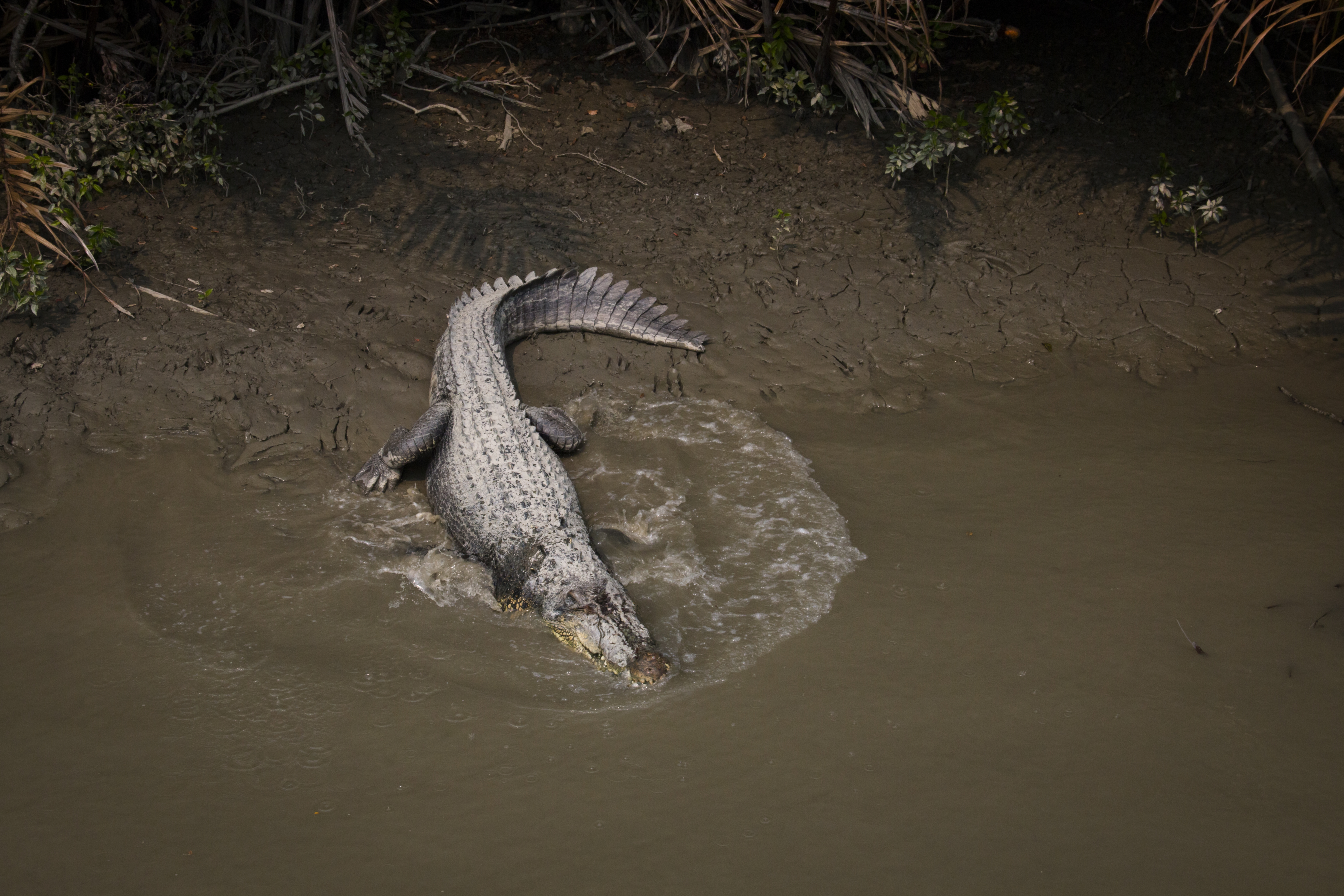
ABOVE: Mugger croc slinks into the waters of Bangladesh’s swamp lands.
Boat trips are available for travelers who wish to sail along the rivers of the Sundarbans in an attempt to spot the mugger crocodile. One-day trips are an option, but for the ultimate adventure three- to four-day trips from Khulna to the deserted mangrove beach Kotka on the Bay of Bengal can be arranged. Giant monitor lizards are often seen bathing in the sun. Another area famous for their crocs is the Tomb Mosque of Khan Jahan Ali in Bagerhatat, where they are often found in close proximity to those who go to the waters.
Read More
.

